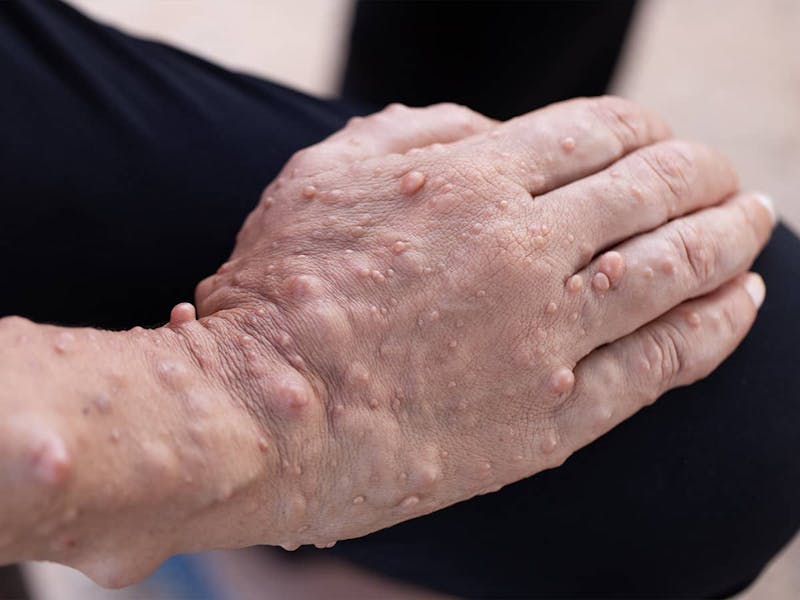
Neurofibromatosis Type 3, also known as Schwannomatosis, is a rare genetic disorder that affects individuals of all ages. Schwannomas are specialized cells that cause the growth of tumors along the nerves and can cause nerve pain and other symptoms. Managing this type of tumor requires careful monitoring and treatment from a medical professional.
Individuals with Schwannomatosis may need to take medications to reduce nerve pain or undergo surgery to remove the tumors. Other forms of Neurofibromatosis, such as Types 1 and 2, have different symptoms and require different treatments. It is important for individuals with Schwannomatosis to be aware of their condition and seek out appropriate medical care in order to manage their symptoms effectively.
1. Learn About Neurofibromatosis Type 3
Learning about Neurofibromatosis Type 3 is the first step in managing this condition. It is important to understand the symptoms and how it is diagnosed. Vestibular schwannomas are benign tumors that can form along the nerves of individuals with Schwannomatosis. Genetic testing can be used to determine if an individual has a family history of Neurofibromatosis Type 3, which may help with an accurate diagnosis.
It is important to stay informed about Neurofibromatosis Type 3 to make informed decisions about your health care. Talk to your doctor or specialist about any questions or concerns you may have regarding your condition and treatment options.
2. Stay Informed About Treatments
You should be able to understand the different types of treatments available and how they can help manage symptoms. Medications such as anticonvulsants, antidepressants, and pain relievers may be prescribed to reduce nerve pain or other symptoms associated with signs of Schwannomatosis. Surgical removal of the tumors is often necessary to reduce pain and other symptoms. During neurofibromatosis surgery, the doctor will perform an examination of the tumor tissue to determine if it is benign or malignant.
It is important to discuss all treatment options with your doctor in order to make an informed decision about which option is best for you. Additionally, it is important to stay up-to-date on any new treatments or research related to Neurofibromatosis Type 3 so that you can make the most informed decisions possible regarding your health care.
Ask your doctor or specialist about any new developments in the field of Neurofibromatosis Type 3 so that you can stay informed and make the best decisions for yourself and your health.
3. Find Support for Neurofibromatosis Type 3
Finding support for Neurofibromatosis Type 3 is essential for managing this condition. It is important to understand the life expectancy of people with this genetic condition and the potential losses they may experience. Support groups can provide a safe space for individuals to share their experiences, ask questions, and receive emotional support from others who are living with Neurofibromatosis Type 3. Additionally, these groups can provide resources and information about treatments, research, and other topics related to Schwannomatosis.
It is also important to find support from family members and friends who can offer understanding and compassion during difficult times. Having a strong support system in place can help individuals cope with the physical, emotional, and mental challenges associated with Neurofibromatosis Type 3. Additionally, having a supportive network of people who understand your condition can help you manage your symptoms more effectively by providing encouragement and motivation when needed.
4. Monitor Symptoms & Mark Progress
It is important to be aware of the common symptoms associated with this form of neurofibromatosis such as peripheral nerve sheath tumors and pain in the affected area. Keeping track of any changes in symptoms can help you identify potential issues early on and take steps to address them. Additionally, it is important to note any improvements or successes that have been made in managing your condition so that you can stay motivated and encouraged.
It is also crucial to keep a record of all medications, treatments, and therapies you received for treating Neurofibromatosis Type 3. This will help you keep track of what has worked for you in the past and what may need to be adjusted or changed in order to manage your condition better. Additionally, keeping a record of your progress can help you recognize when it’s time to seek additional medical attention if needed. Monitoring symptoms and marking progress is essential for managing Neurofibromatosis Type 3 so that individuals can live as full of a life as possible despite their diagnosis.
5. Watch Out For Complications
Complications of Schwannomatosis include chronic pain, facial weakness, bowel dysfunction, and spinal cord compression. Additionally, somatic mutations can occur in some individuals which can lead to further complications such as seizures, cognitive impairment, and vision problems. For example, dumbbell tumors may require spinal fusion and stabilization.
Regular check-ups with a doctor are crucial for managing Neurofibromatosis Type 3 and watching out for any potential complications. During these visits, it is important to discuss any changes in symptoms or new developments that may have occurred since the last visit. It is also important to ask questions about treatments or therapies that may help manage symptoms or reduce the risk of further complications.
6. Eat A Balanced Diet
Eating a balanced diet is an important part of managing Neurofibromatosis Type 3. Clinical diagnosis of this condition can vary from person to person, with some individuals experiencing mild symptoms and others having more severe cases. Eating a balanced diet can help improve the quality of life for those affected by Neurofibromatosis Type 3, as it can provide essential nutrients that may be lacking due to the condition. Studies have shown that up to 50 percent of people with Neurofibromatosis Type 3 experience malnutrition, so eating a healthy diet is especially important for these individuals.
A balanced diet should include plenty of fruits and vegetables, lean proteins, whole grains, and healthy fats. It is also important to limit processed foods and sugary drinks as much as possible. Eating a well-balanced diet over a period of time can help reduce symptoms associated with Neurofibromatosis Type 3 such as fatigue and pain. Additionally, it can help boost energy levels and improve overall health in those affected by this condition. Eating a healthy diet is an essential part of managing Neurofibromatosis Type 3 and improving the quality of life for those affected by this condition.
7. Understand Possible Genetic Risk Factors
A mutation in the NF2 gene causes the growth of schwannomas, which is located on chromosome 22. Individuals who have a family history of this condition are more likely to develop it themselves. Additionally, individuals with certain other genetic conditions such as tuberous sclerosis or von Hippel-Lindau disease may also be at an increased risk for developing Neurofibromatosis Type 3. It is important to understand these potential genetic risk factors so that individuals can take steps to reduce their chances of developing this condition or manage it if they do develop it.
It is also important to understand the implications of having a family history of Neurofibromatosis Type 3. If one parent has these genetic signs, there is a 50 percent chance that their children will also develop it. For this reason, early detection of neurofibromatosis is crucial. Families suffering from this condition should discuss their medical history and any potential risks with a genetic counselor. The doctor will monitor the patient closely with genetic testing and will recommend appropriate treatment if necessary.

Is there a cure for Neurofibromatosis Type 3?
At this time, there is no known cure for schwannomatosis. However, there are treatments available that can help manage the symptoms of schwannomatosis and reduce the risk of further complications. These treatments include medications for pain management and swelling, physical therapy to improve mobility, and surgery to remove the different types of tumors or other growths. Additionally, lifestyle changes such as eating a balanced diet and getting regular exercise can also help improve the quality of life for those affected by this condition.
It is important to note that while there is no cure for this genetic disease, research into potential treatments is ongoing. Clinical trials are currently underway in order to find new ways to treat this condition and improve the lives of those affected by it.
What to do if you have a diagnosis of Neurofibromatosis?
If you or a family member have shown a symptom of schwannomatosis, the first step is a referral to a Neurofibromatosis Clinic or a neurologist or geneticist with expertise in the field. After a thorough workup, there may be a requirement to see a neurosurgeon if there is a need for brain tumor surgery or an orthopedic surgeon for issues in the spinal cord.
Frequently, a plastic surgeon with a specialization in neurofibromatosis addresses tumors that are causing symptoms such as pain or disfigurement. Dr. Panossian has treated patients with neurofibromatosis for over a decade and recognizes the unique requirements of this patient population. Our healthcare team can assist you with the proper referral. Schedule a consultation today.


